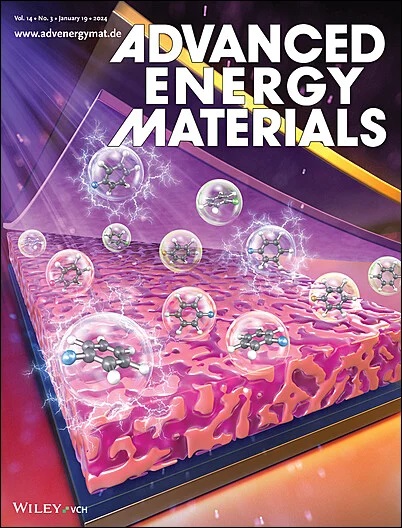Photocathode Materials for Li–O2 Batteries: Progresses and Perspectives
IF 24.4
1区 材料科学
Q1 CHEMISTRY, PHYSICAL
引用次数: 0
Abstract
Li–O2 batteries (LOBs), which possess immense theoretical energy densities, have been widely recognized as a promising technology to revolutionize electrochemical energy storage. However, the severe overpotential induced by sluggish redox reaction kinetics significantly hinders their practical application. To address this challenge, photocathodes have been incorporated into LOBs, leveraging photovoltage to compensate for charging voltages and achieve ultralow overpotential. Nevertheless, a comprehensive review of photocathode in LOBs is still lacking. This timely review aims to introduce the pivotal role of photo-assisted strategy in LOBs, and provides an updated overview of photocathode utilized in LOBs. After demonstrating the mechanisms of photo-assisted Li–O2 batteries reaction, research progress for the application of various photocathodes in LOBs is comprehensively reviewed. Special emphasis is placed on the critical correlation between photocathode material design and key challenges in photo-assisted LOBs, including reduced charging potential/improved discharging potential, alleviated electrolyte decomposition, suppressed photogenerated carrier recombination, broadened spectral response ranges, decoupled mass transport and electron transfer, and modulated charge/discharge mechanisms. Finally, future challenges and directions of photocathode material development and application in photo-assisted LOBs systems are reviewed. The current review provides important insight into photo-assisted cathode design as the state-of-the-art strategy for favorable reaction kinetics for high-performance LOBs.

求助全文
约1分钟内获得全文
求助全文
来源期刊

Advanced Energy Materials
CHEMISTRY, PHYSICAL-ENERGY & FUELS
CiteScore
41.90
自引率
4.00%
发文量
889
审稿时长
1.4 months
期刊介绍:
Established in 2011, Advanced Energy Materials is an international, interdisciplinary, English-language journal that focuses on materials used in energy harvesting, conversion, and storage. It is regarded as a top-quality journal alongside Advanced Materials, Advanced Functional Materials, and Small.
With a 2022 Impact Factor of 27.8, Advanced Energy Materials is considered a prime source for the best energy-related research. The journal covers a wide range of topics in energy-related research, including organic and inorganic photovoltaics, batteries and supercapacitors, fuel cells, hydrogen generation and storage, thermoelectrics, water splitting and photocatalysis, solar fuels and thermosolar power, magnetocalorics, and piezoelectronics.
The readership of Advanced Energy Materials includes materials scientists, chemists, physicists, and engineers in both academia and industry. The journal is indexed in various databases and collections, such as Advanced Technologies & Aerospace Database, FIZ Karlsruhe, INSPEC (IET), Science Citation Index Expanded, Technology Collection, and Web of Science, among others.
 求助内容:
求助内容: 应助结果提醒方式:
应助结果提醒方式:


